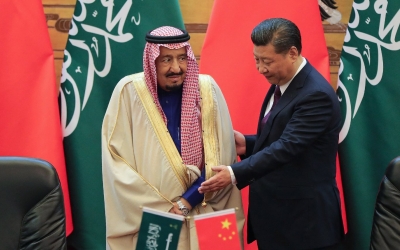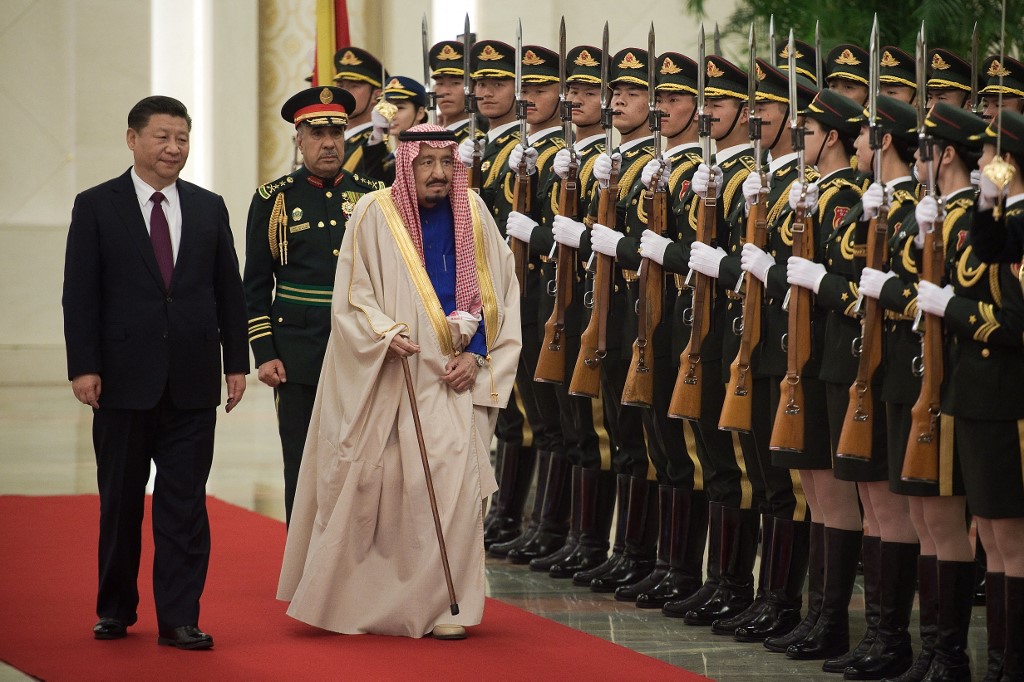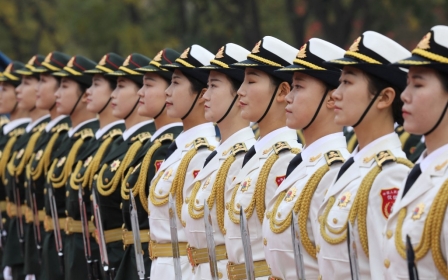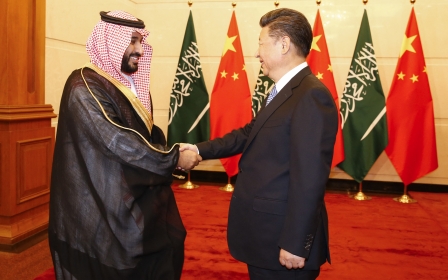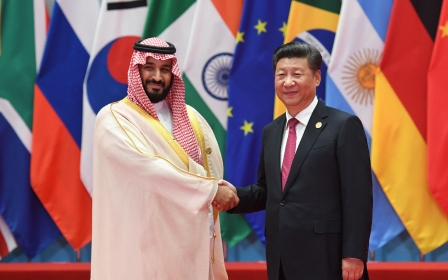China-Arab summit: What's on the table? Perhaps the future of the Gulf

Since the start of the Covid-19 pandemic, President Xi Jinping has only left China once, to visit Kazakhstan and Uzbekistan in September 2022. A second trip is now scheduled this week, when Xi is set to land in Riyadh to meet his Saudi counterparts, King Salman bin Abdulaziz al-Saud and Crown Prince Mohammed bin Salman.
On the occasion of Xi’s visit, Saudi Arabia has also decided to host the very first China-Arab summit, set to take place on 9 December. Although no other details were shared, invitations to join the event have been sent to leaders throughout the Middle East and North Africa, with many wondering what is to be expected.
The announcement of a China-Arab summit is significant. At a time of strained ties between Riyadh and Washington, it is a testament to the shifting power dynamics within the Gulf and crucial to appreciate the interests at play - and where these converge. What does China want? What about the Gulf monarchies? And, in particular, Saudi Arabia?
The goals of China and the Gulf are aligned in many domains, which means that the summit is only likely to produce new synergies
As we will see, the goals of China and the Gulf are aligned in many domains, which means that the summit is only likely to produce new synergies.
Talks about a Gulf Cooperation Council (GCC)-China free trade agreement have travelled a long and bumpy road. Starting as early as 2004, they were suspended in 2009 and resumed in 2016, only to reach a halt again in 2017, when the GCC’s internal divisions culminated in the Qatar diplomatic crisis.
New MEE newsletter: Jerusalem Dispatch
Sign up to get the latest insights and analysis on Israel-Palestine, alongside Turkey Unpacked and other MEE newsletters
But in 2021 the Gulf monarchies restored their ties and re-started work as a bloc. At present, Chinese and GCC leaders make no secret of it: the time finally seems to be ripe for a long-awaited China-GCC FTA. China’s ambassador to the UAE, Zhang Yiming, recently said that negotiations over a China-GCC FTA had entered “the final and critical stage”, and that the two sides “have agreed on most issues”.
This is likely to bring substantial mutual benefits - in 2020, China was expected to replace the European Union as the GCC’s largest trading partner, with total bilateral trade valued at $161.4bn. An FTA would only increase international trade between China and the bloc, and one might well expect that the summit will bring renewed discussions on a long-simmering negotiation.
Oil priced in yuan
A conversation over yuan-priced oil contracts has occasionally been had over the past six years between Beijing and Riyadh, and the summit could provide a platform for new focused talks.
China’s efforts to internationalise the yuan have an attractive partner in Riyadh: Beijing buys more than 25 percent of the kingdom’s oil exports, and if these deals were priced in yuan, Saudi’s oil could help the Chinese renminbi boost its standing as a global currency.
In addition, such a move could set a precedent and induce other oil-rich countries to follow suit and price their exports in yuan.
But it is important to view these scenarios with caution. The dollar has long been the default currency for the energy market - Saudi Arabia has used it since 1974, following a deal with the Nixon administration that created the formula widely known as the “Oil for Security” deal.
The Saudi riyal is pegged to the dollar, meaning that any weakness in the currency would ultimately have an impact on Riyadh, too.
In addition, the kingdom might be reluctant to accumulate large amounts of China’s renminbi, and yet punitive sanctions against Russia have also reawakened old fears over a dollar-dominated trading system. As a result, countries like Saudi Arabia might be looking to reduce their reliance on the currency.
Beijing is in a position to try to internationalise the yuan by offering attractive incentives to the kingdom - for example through massive investments in their ambitious megaprojects. Certainly, a renewed discussion on oil deals in petroyuan (China's oil trade currency) would indicate that the norms of a US-dominated world order are being increasingly eroded by new alternatives.
Expansion of the Brics - the grouping of the world’s emerging economies Brazil, Russia, India, China and South Africa - is yet another realm where the GCC’s goals are clearly consistent with the interests of Beijing. Chinese Foreign Minister Wang Yi recently announced the idea of “Brics Plus”, a framework that encapsulates the intention to open the organisation to new members.
Both Saudi Arabia and the United Arab Emirates were quick in expressing their interest in joining. Besides talks on FTAs and oil deals in petroyuan, one might also expect a conversation about BRICS Plus during the China-Arab summit.
“We have developed a case of oil addiction in Saudi Arabia,” bin Salman stated in 2016, before unveiling his Vision 2030 reform plan.
Diversification
Indeed, “visions” are a familiar keyword in the Gulf, where each of the six monarchies has mapped out a strategy of national diversification to move away from an oil-based economy.
Qatar has launched a “National Vision 2030”, parallel to Kuwait’s “Vision 2035”, Oman’s “Vision 2040”, Bahrain’s “Economic Vision 2030” and UAE’s “We the UAE 2031”.
Key areas of this process of diversification are the maritime sector, with the construction of port infrastructure, and the development of a strong high-tech sector. China’s Belt and Road Initiative, with its infrastructural and technological opportunities, is well situated to help the Gulf heal its “oil addiction”.
China’s 5G technology is key to helping the Emiratis and the Saudis develop their “smart ports” and enhance operational efficiency.
In Abu Dhabi, China’s smart electric firm NWTN is building an electric vehicle facility. Nearby, in the futuristic metropolis of Dubai, a flying car built by Chinese company Xpeng Aeroht made its first public launch in October 2022 - fully electric, capable of avoiding traffic, with experts saying it could be ready for public use in as little as five years. It is a growing reality in the Gulf and it is likely that the summit will elevate these economic synergies to a new level.
US-Saudi tensions
The China-Arab summit comes at a time of deteriorating relations between Washington and Riyadh. The kingdom’s recent decision to cut oil production and boost crude prices was largely perceived in the US as a slap in the face by a longtime ally.
That Riyadh is hosting a China-Arab summit sends a subtle message to the Americans: Saudi Arabia clearly intends to take a more autonomous path in its decision-making.
That Riyadh is hosting a China-Arab summit sends a message to the Americans: Saudi Arabia clearly intends to take a more autonomous path
On this path, Riyadh would be reluctant to let the US control its alliances - on the contrary, with the upcoming summit, the Persian Gulf is setting the stage to further benefit from Beijing’s engagement in the region.
Talks about a free trade agreement, potential oil deals in yuan, membership of Brics Plus and vast technological cooperation are strong indicators of this reality.
In July, US President Joe Biden wrote in the New York Times that he would travel to the Middle East to start a “more promising chapter of America’s engagement there”.
He also claimed that to outcompete China, the US would need to engage with countries like Saudi Arabia. As of now, it seems these efforts are not bringing much success.
It is not clear how Washington will respond in the future. A new Middle East policy might be necessary in order to rebuild an influence it is evidently losing.
The views expressed in this article belong to the author and do not necessarily reflect the editorial policy of Middle East Eye.
Middle East Eye delivers independent and unrivalled coverage and analysis of the Middle East, North Africa and beyond. To learn more about republishing this content and the associated fees, please fill out this form. More about MEE can be found here.


